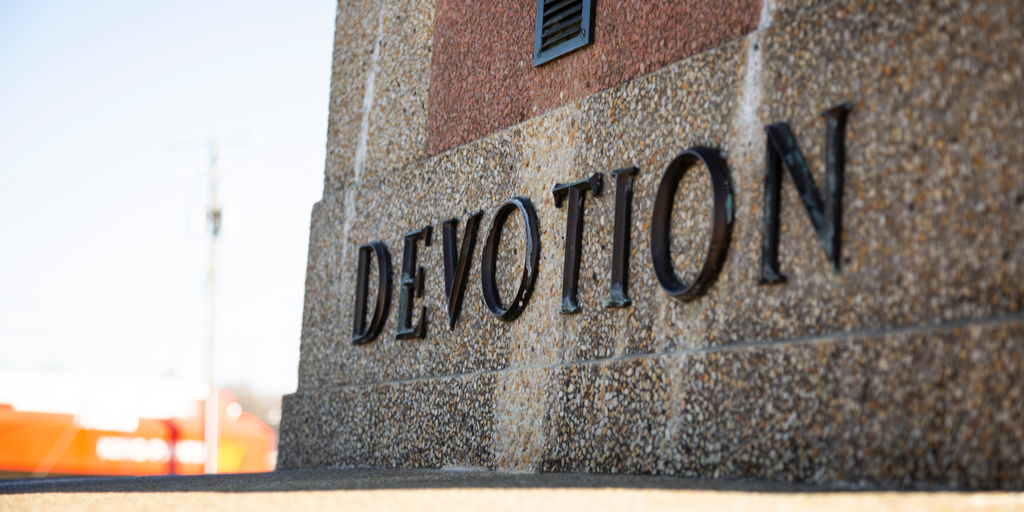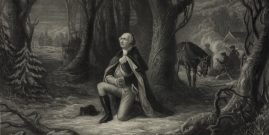The goods of human dignity, human rights, and human liberty can be secured only by a transcendent source and an ontological grounding.
Getting Back to Original Meaning
Francis Beckwith has provided an excellent account of the development of the Lemon Test. I agree that it is an ahistorical and analytical test that was applied in an “ad-hoc, counter-intuitive” manner. He is also correct that if justices had attempted to remedy the ad-hoc problem by applying it rigorously, the test would have institutionalized “both a government preference for secularism as well as a hostility toward religion.”
Beckwith observes that the Lemon Test “is rooted in post-1947 Court opinions and not on how the “establishment of religion” was generally understood when the First Amendment was ratified.” I largely agree, but think it important to remember that a surprising range of justices have argued that the Establishment Clause must be interpreted in light of its “generating history.” I focus only on a few justices and cases in this brief essay, but I provide a far more detailed overview elsewhere, which demonstrates that both liberal and conservative justices regularly made such claims. Remarkably, in select cases, even separationists like Black and Brennan offer not-unreasonable accounts of what the Establishment Clause was originally understood to prohibit. If these and other jurists had stuck with their inclination to rely on the original public meaning (a phrase they did not use) of the First Amendment rather than cobble together an ahistorical analytical test, much of the Court’s muddled Establishment Clause jurisprudence, especially of the 1970s and 1980s, would have been avoided
Judicial Liberals and Original Public Meaning
In Everson v. Board of Education (1947), Justice Hugo Black contended that the “meaning and scope of the First Amendment” have been interpreted in “light of its history and the evils it was designed forever to suppress.” These evils included “efforts to force loyalty to whatever religious group happened to be on top and in league with the government of a particular time and place.” In pursuit of such aims,
men and women had been fined, cast in jail, cruelly tortured, and killed. Among the offenses for which these punishments had been inflicted were such things as speaking disrespectfully of the views of ministers of government-established churches, non-attendance at those churches, expressions of nonbelief in their doctrines, and failure to pay taxes and tithes to support them.
This list, like the list of six specific things Black thought the Establishment Clause prohibits quoted by Beckwith, is fairly accurate. Black primarily erred in his claim on the second list that “No tax in any amount, large or small, can be levied to support any religious activities or institutions, whatever they may be called, or whatever form they may adopt to teach or practice religion” and his suggestion that the clause somehow prohibits religious organizations from participating in politics (a result implied by the wall of separation metaphor but impossible to reach based on any sensible reading of the words “Congress shall make no law respecting an establishment of religion…”). But his overall point that the Establishment Clause was understood to prohibit the evils the founders associated with religious establishments is correct.
Justices Black and Rutledge disagreed about the constitutionality of the state program challenged in Everson, but they both agreed that, in the latter’s words:
No provision of the Constitution is more closely tied to or given content by its generating history than the religious clause of the First Amendment. It is at once the refined product and the terse summation of that history.
Rutledge followed this passage with an extensive discussion of church-state struggles in Virginia and a short examination of the framing of the First Amendment. To be sure, both Black and Rutledge overemphasized the influence of Thomas Jefferson and James Madison and inaccurately asserted that the Establishment Clause creates a “high and impregnable” wall of separation between church and state. In doing so, they profoundly distorted the founders’ views. But if justices had remained committed to interpreting the Establishment Clause in light of its original public meaning, these erroneous historical assertions could have been corrected.
Drawing from a wide range of founding-era sources, Rehnquist concluded that there is “no historical foundation for the proposition that the Framers intended to build the ‘wall of separation’ that was constitutionalized in Everson.”
Even as justices began crafting what became the Lemon Test, they did not completely ignore history. For instance, in Abington v. Schempp (1963), which articulated a “primitive version of Lemon’s first two prongs,” Justice Tom Clark observed that “the views of Madison and Jefferson, preceded by Roger Williams, came to be incorporated not only in the Federal Constitution but likewise in those of most of our States.” Clark’s superficial and wildly inaccurate historical statements about the founders’ views need not detain us.
Of far greater interest is Justice William Brennan’s concurring opinion. After warning against relying on “a too literal quest for the advice of the founding fathers,” he provided a sweeping discussion of a range of founding-era documents and Supreme Court cases before concluding that:
the line we must draw between the permissible and the impermissible is one which accords with history and faithfully reflects the understanding of the Founding Fathers. It is a line which the Court has consistently sought to mark in its decisions expounding the religious guarantees of the First Amendment. What the Framers meant to foreclose, and what our decisions under the Establishment Clause have forbidden, are those involvements of religious with secular institutions which (a) serve the essentially religious activities of religious institutions; (b) employ the organs of government for essentially religious purposes; or (c) use essentially religious means to serve governmental ends, where secular means would suffice.
Brennan also noted that there are “myriad forms of involvements of government with religion” that may not violate the Establishment Clause, including:
- military/legislative chaplains and religious exemptions;
- religious exercises in legislative bodies;
- non-devotional use of the Bible in public schools;
- Uniform tax exemptions incidentally available to religious institutions;
- Religious considerations in public welfare programs;
- Activities with religious origins which have ceased to have religious meaning, such as the use of “In God We Trust” on currency, documents, and buildings.
Brennan’s understanding of what the Establishment Clause prohibits and permits, as articulated in this case, is largely correct. Unfortunately, in the 1980s he repudiated relying on the original meaning of the Establishment Clause and turned instead to the Lemon Test to reach separationist conclusions.
Moments of Silence as Religious Establishment?
In 1978, Alabama enacted a statute permitting teachers to “announce that a period of silence not to exceed one minute in duration shall be observed for meditation or voluntary prayer.” In Wallace v. Jaffree (1985), a majority of justices utilized the Lemon Test and found the practice to be an unconstitutional establishment of religion. In his dissenting opinion, Justice William Rehnquist listed a number of the conflicting results wrought by Lemon:
a State may lend to parochial school children geography textbooks that contain maps of the United States, but the State may not lend maps of the United States for use in geography class. A State may lend textbooks on American colonial history, but it may not lend a film on George Washington, or a film projector to show it in history class. A State may lend classroom workbooks, but may not lend workbooks in which the parochial school children write, thus rendering them nonreusable. A State may pay for bus transportation to religious schools but may not pay for bus transportation from the parochial school to the public zoo or natural history museum for a field trip. . .
Instead of relying on a faulty test that leads to absurd results, Rehnquist contended that the Establishment Clause should be interpreted in light of the evils it was understood to prevent. Drawing from a wide range of founding-era sources, he concluded that there is “no historical foundation for the proposition that the Framers intended to build the ‘wall of separation’ that was constitutionalized in Everson.” Instead, the “Framers intended the Establishment Clause to prohibit the designation of any church as a ‘national’ one . . . [and] to stop the Federal Government from asserting a preference for one religious denomination or sect over others.”
The Supreme Court Kills the Lemon Ghoul
In the 1980s, it became increasingly clear that the Lemon Test was less than useful (to put it kindly). It was sometimes ignored, used inconsistently, and more than one justice tried to kill it. Anti-Lemon jurists may have succeeded in The American Legion v. American Humanist Association (2019), a case involving the constitutionality of an “immense Latin cross” erected to commemorate young men from Bladensburg, Maryland who lost their lives in the First World War. A state agency eventually took over and maintains the cross, which the American Humanist Association thought violated the Establishment Clause. The justices ruled 7-2 that it did not.
Justice Alito, in a plurality opinion joined by Roberts, Breyer, and Kavanaugh, was highly critical of Lemon. Justices Gorsuch and Thomas each wrote concurring opinions making it clear that Lemon should go. Although there is no clear majority opinion stating that Lemon is formally overruled, it seems evident that it is at least, in the words of Justice Gorsuch, “shelved.” In her concurring opinion, Justice Kagan offered a tepid defense of Lemon’s “purposes and effects” prongs, and Justice Ginsburg simply ignored the Lemon Test in her dissent.
If Not Lemon, Then What?
Justices as diverse as Black, Rutledge, Brennan, and Rehnquist have argued that the Establishment Clause should be interpreted in light of its original public meaning. Opponents of originalism often claim that it is difficult, if not impossible, to discern the original public meaning of constitutional provisions. This may be true in some cases, but with respect to the Establishment Clause, it seems clear that it was originally understood to prohibit the evils associated with established churches. And jurists as different as William Brennan, in Abington, and Michael McConnell, in an influential 2003 law review article, agree that it was understood to prevent a remarkably similar list of practices. In McConnell’s account, the Establishment Clause was originally understood to prohibit six categories of government action:
- government control over the doctrine and personnel of the established church;
- mandatory attendance in the established church;
- government financial support of the established church;
- restrictions on worship in dissenting churches;
- restrictions on political participation by dissenters;
- use of the established church to carry out civil functions.
Such findings have been confirmed by recent scholarship, including my own Did America Have a Christian Founding? and these fine works.
If justices had faithfully interpreted the Establishment Clause in light of its original public meaning, the absurd results that Rehnquist listed in his Wallace dissent would have been avoided. And contemporary arguments that religious exemptions and religious monuments on public land somehow violate the Establishment Clause would get little traction, at least among the current Supreme Court justices.
The Lemon ghoul had a long life, but it may well now be dead. Justices should ensure that it remains in a deep grave where it may rest in peace.



